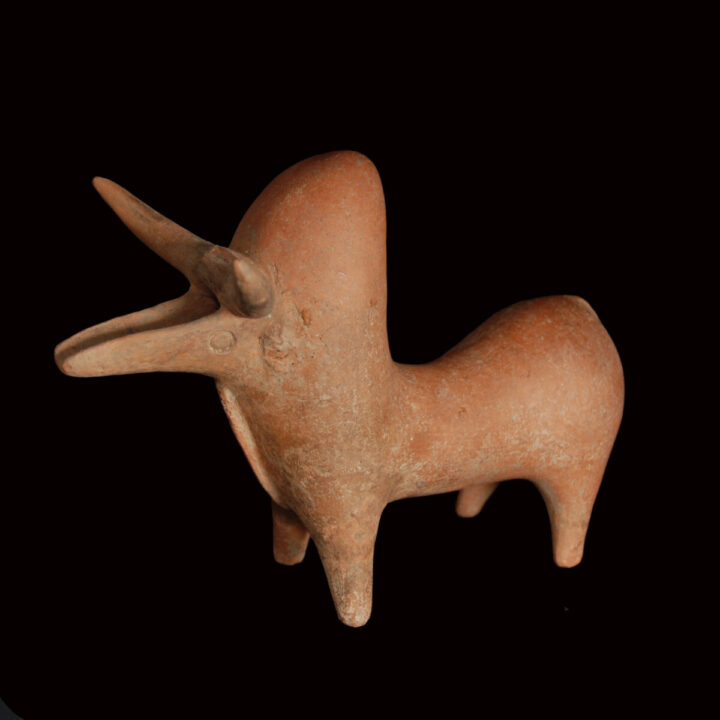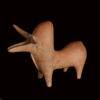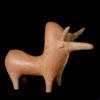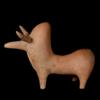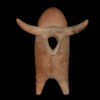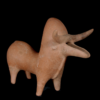Amlash Terracotta Rhyton in Form of a Zebu
Culture: Amlash/Iran
Period: Early 1st millennium B.C.
Material: Terracotta
Dimensions: 16.8 cm x 24.2 cm
Price: Sold
Ref: 6462
Provenance: From an old French collection X. Auctioned with Maîtres Boisgirard et Heeckeren, Paris on 22 May 1980, lot 409. Thence in the collection Magloire France.
Condition: Right front and hind leg reattached without missing parts. Left horn with restoration, otherwise in very good condition.
Description: Magnificently worked out terracotta vessel in form of a male zebu. The animal stands on short, at the bottom flat legs, which merge into a round body. The rounded backside is stretched out and pointing upwards. The tail is accentuated as a flat rib. A similar rib runs below the long snout, it indicates the skin fold on the chest of the bull. The snout is worked out long as a groove and served as the spout. On the sides round eyes are engraved. The strong horns stand upwards and are tapering. Below are button-like ears. The high stylization of the vessel is underlined by the vertically rising, on top rounded humps. Vessels in animal form were produced in Iran since the 4th millennium B.C. The finest ones were created shortly after 1000 B.C. in form of zebus and gazelles, which were excavated in the region southwest of the Caspian Sea, in Garmabak and Marlik. In one tomb in Marlik five bulls were found, which were style-wise very similar to ours. See for the type: Ezat O. Negahban “Marlik: The Complete Excavation Report”, 2 vols., Philadelphia. And: Robert H Dyson, Jr., Charles K. Wilkinson, Prudence Oliver Harper. “Highlights of Persian Art”. Persian Art Series, no. 1 Boulder. pp. 2-17.



